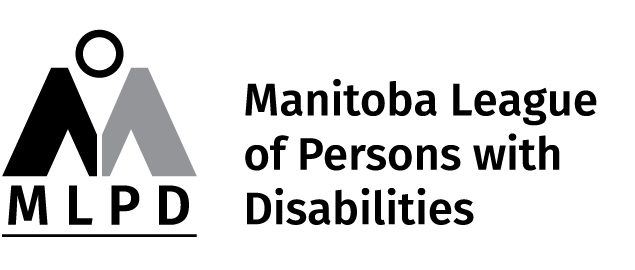As part of MLPD’s ongoing collaboration with Elections Canada, we sought feedback from our community regarding accessibility barriers encountered during elections. Below are some of the insights we gathered:
Terry*, a resident of a Northern town in Manitoba, shared an overall positive experience with voting, noting that most polling stations in his community were accessible. He also commended both federal and provincial election workers for accommodating his needs when he faced a barrier, allowing him to vote.
However, Terry highlighted a few challenges. First, he noted that the accommodations provided by federal and provincial election workers were not consistently applied by municipal election staff. Additionally, despite being in a well-lit room, Terry had trouble seeing while voting. He suggested that a more direct or localized light source would improve visibility. Furthermore, Terry pointed out that the city hall, which serves as a polling station in his community, is cramped and has two entrances: one features a single wheelchair drop-off spot and a ramp that requires going up stairs to access, while the other entrance is located a considerable distance away.
Terry also volunteered to assess accessibility at polling stations during the last federal election. At one school, the route into the polling station was changed to a more efficient side door. However, Terry observed that the door was difficult to open and that the pathway was often obstructed by stored equipment, creating barriers for wheelchair users. While these issues were subsequently addressed, Terry’s experience underscores the importance of involving people with disabilities in the accessibility planning process to ensure smooth election experiences.
We also received feedback from Sandi, who encountered difficulties during advance voting for the most recent provincial election at the St. Norbert Arts Centre. Although there was a designated accessible parking spot, the absence of clear markings led to two vehicles parking on either side, reducing the space needed for accessibility. When Sandi raised the issue with polling officials, she was directed to speak with the Arts Centre’s Executive Director, who was uncooperative and made her feel disrespected. This situation illustrates the unpredictability of ensuring accessibility and the need for flexibility in accommodations.
Both MLPD and Elections Canada are committed to making polling stations as accessible as possible. Elections Canada currently utilizes a checklist to assess the accessibility of potential polling locations. This checklist includes essential requirements such as level access to the building, doors that are easy to open, and voting rooms located on the same level as the entrance. The checklist also includes recommended features, such as proximity to public transit, designated parking for individuals with disabilities, and accessible restrooms. We encourage Manitobans with disabilities to provide feedback on this checklist. Please note that this checklist is specifically for federal elections.
If you or a family member have concerns about the accessibility of your voting location, Elections Canada recommends checking online, calling their toll-free number at 1-800-463-6868 (or TTY at 1-800-361-8935 for those who are deaf or hard of hearing), or reviewing your Voter Information Card once received. If the location is not accessible, you can request a Transfer Certificate to change your voting station or opt to vote by mail. Should you encounter accessibility issues during the election period, you may contact your Returning Officer for assistance and to request a Transfer Certificate. Their contact information is available on the Elections Canada Voter Information Service page.
Terry also recommended that individuals with disabilities be specifically encouraged to volunteer or work during elections, ensuring their insights are incorporated into the planning process and further improving accessibility. People with disabilities are experts on what is needed to ensure accessibility – for example, Sandi suggested that if it is not possible to mark parking spots due to the ground’s gravel composition, two posts could be placed at the edges to direct non-disabled drivers to park at the correct distance. This is a topic we look forward to exploring further in the coming months.
What are your thoughts on Terry and Sandi’s experiences? Have you encountered accessibility challenges during federal elections? We would appreciate hearing from you.
Contact us by phone: 204-943-6099 or by email: contact@mlpd.mb.ca
*name changed
